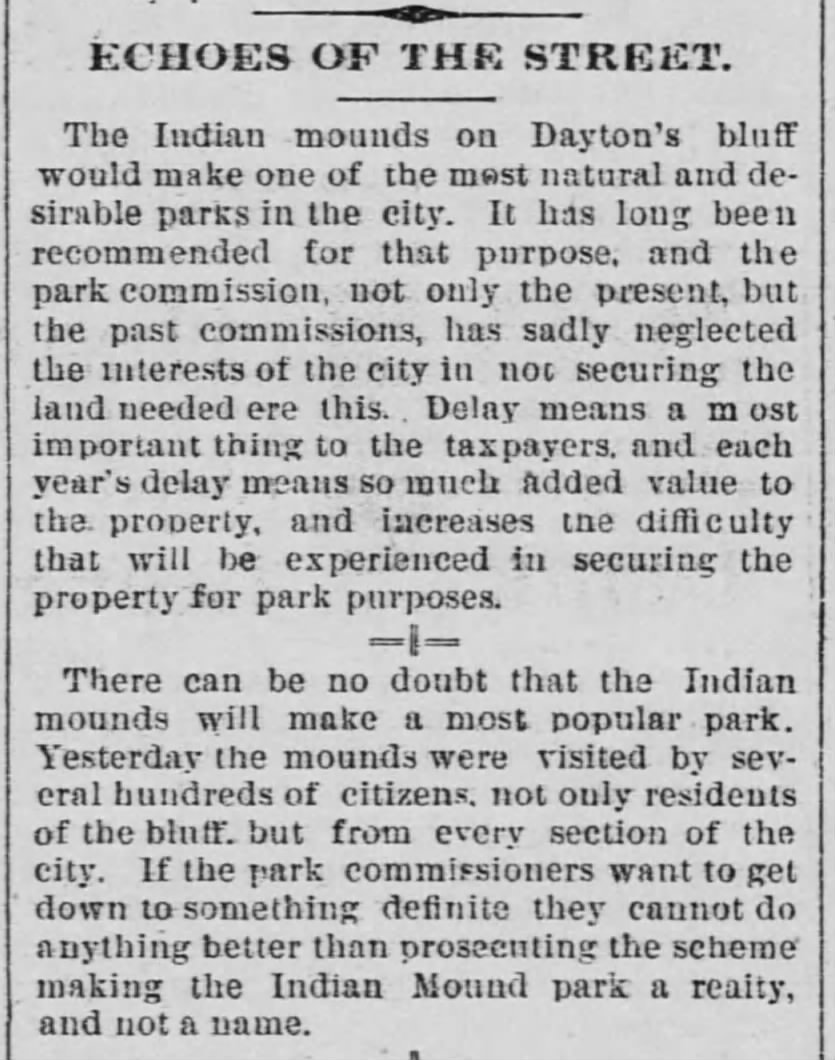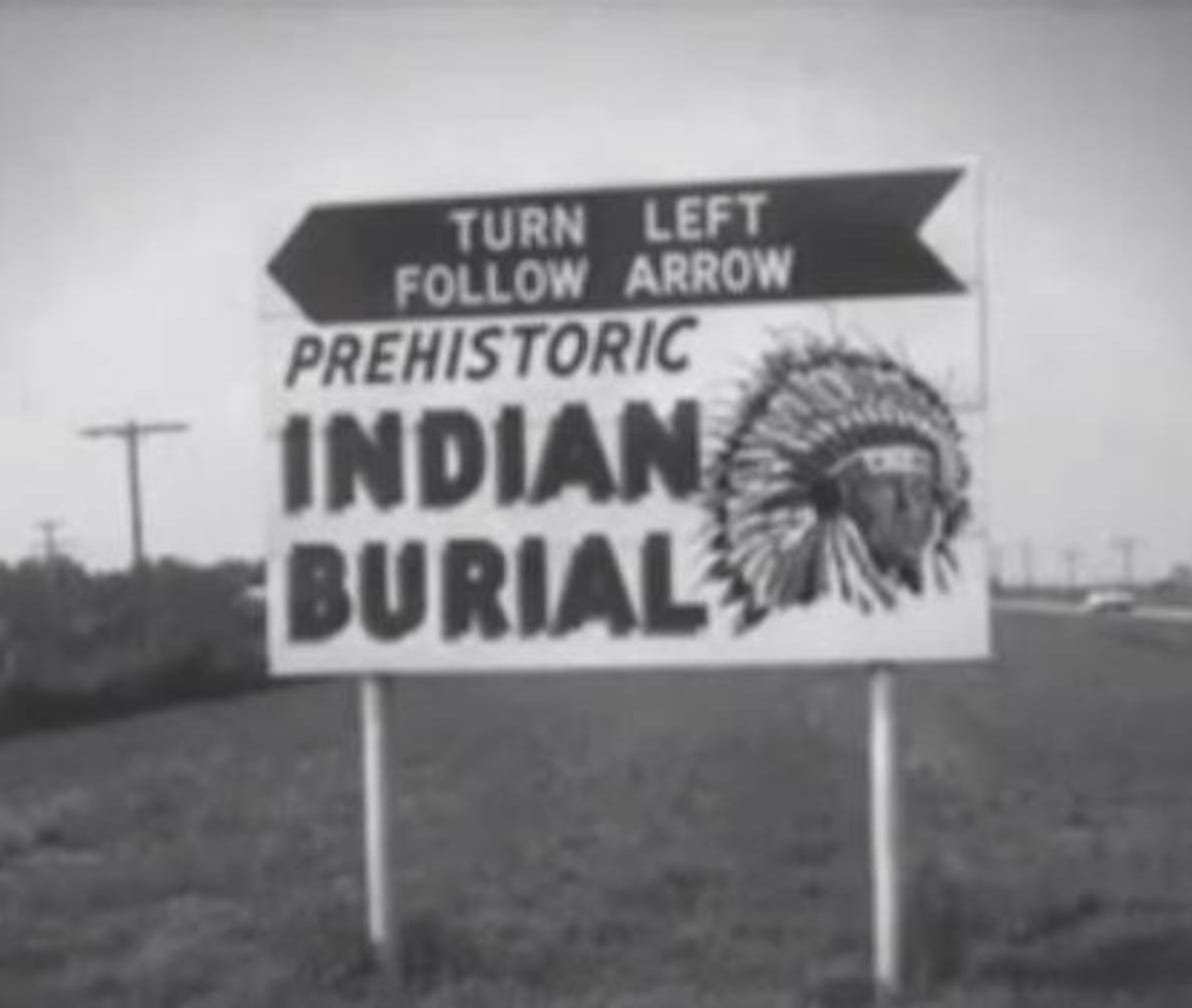Sacred Minnesota: Indian Mounds
I love city skylines. I feel like Dorothy in the Wizard of Oz when she sees the Emerald City. I know I’m not alone. There are lots of scenic overlooks that allow beautiful views of the Twin Cities.
One of the best spots to look over downtown Saint Paul is from the top of Dayton’s Bluff. But even before Lyman Dayton bought land in the area in 1854, it was well-known that the Dakota people called this place Kaposia. Their village was on the riverbanks below and they placed their dead on scaffolds high on the bluff in a place of honor. Even before them, the Hopewell Indians had created dozens of burial mounds that ringed the bluff.
Blocking the View
As Saint Paul grew, the cemetery that was sacred to the Dakota became “inconvenient” to white settlers. The western mounds were leveled and graded to make room for streets and buildings and especially so they could have better scenic views of the growing downtown. When the railroad lines below below the bluff and along the river expanded, they demolished several feet of the bluff and more mounds were lost.
Curiosity
Archeologists - both amateur and professional - carelessly dug up the mounds, sorting through the bones and artifacts, keeping whatever they found. In 1892, the city of St. Paul created Indian Mounds Park. Not as protection for the cemetery, but to encourage tourism. They carved walking paths into the eastern mounds so sightseers could stand on top of the graves to get a better view. By the 1950s, the mounds were finally given more respect and the paths to the tops of the mounds were removed, but by then only six of the mounds remained.
Legal Protection
In 1987, the clues for the annual St. Paul Winter Carnival medallion scavenger hunt led seekers to the park and they took it upon themselves to dig in the burial mounds in search of their prize. (Now, the rules for the annual event include a disclaimer that the medallion will not be hidden in the park.)
*Unfortunately, the event organizers didn’t learn their lesson and, again, in 2024 they encountered controversy by hiding the prize medallion in the Bruce Vento Nature Sanctuary which is also a sacred Dakota sight including the revered and historic cave, Wakan Tipi.
It wasn’t until 1990, with the passage of the Native American Graves Protection and Repatriation Act (NAGPRA), that the burial mounds finally received legal protection. Still, it seemed very difficult for people to remember that the mounds are a sacred place.
Today, numerous signs throughout the park try to strike a balance, welcoming visitors while also reminding them that this is a place for respect and remembrance.
It’s fun to look at the skyline and imagine the lives of those who live there - but it’s also important to respect the memories and lives of those who lived HERE, FIRST.























